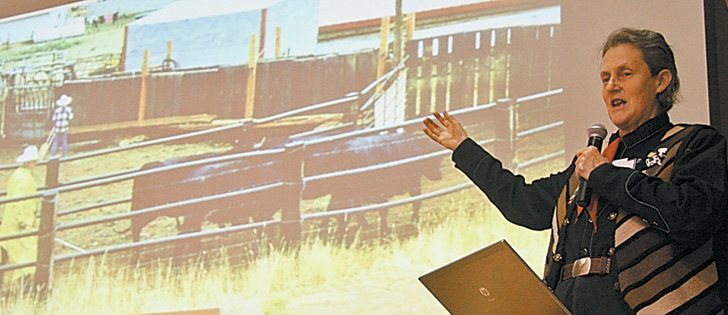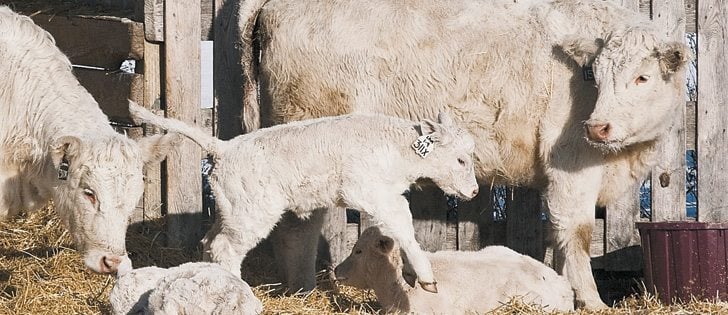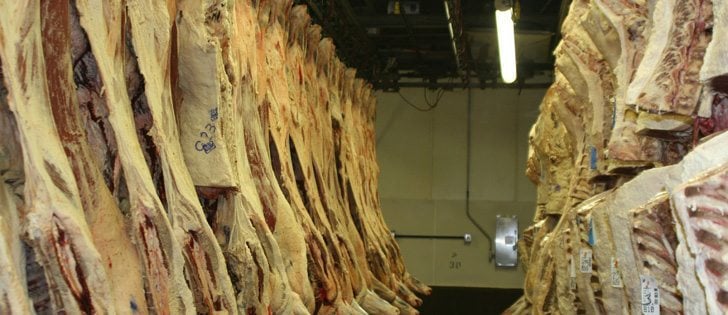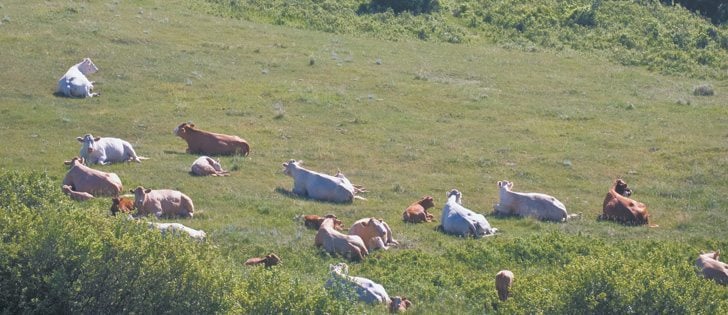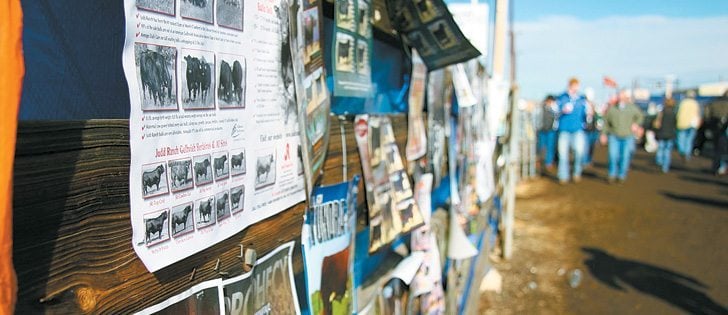Major changes have occurred in winter feeding management over the last decade.
Many cows are still fed in traditional dry lots on stored feed, but a significant proportion of producers have shifted to more extensive winter feeding arrangements such as bale and swath grazing. Regardless of how the cows are fed during winter, it is still critical to monitor and manage cows’ body condition during their pregnancy.
In Canada, we tend to use a five point scale for body condition scoring, while the American system uses a nine point scale. Producers who use the five point scale often use half increments, which make the scale similar to the American system.
Read Also

Charges laid after cattle theft
Saskatchewan RCMP lay two charges against a man after six cattle went missing.
Learning to body condition score is remarkably easy and an inexpensive way to determine the amount of fat an animal is carrying.
The main areas used to evaluate body condition are the hip bones (hooks and pins), the tail head, the back bone and the short ribs.
A cow with a body condition score of one is extremely thin and emaciated. No external fat is present, and these cows will have difficulty surviving under any stressful conditions.
Cows with a body condition score of two have little fat tissue but have muscle tissue around the tail head and over the hip bones. Individual ribs can still be identified.
Cows with a body condition score of three have a slight cover of fat evident in the tail head area and over the ribs.
Cows with a body condition score of four have more abundant fat deposits and cows with a score of five are obese with large deposits of fat over the tail head, hip bones and ribs.
Body condition scoring is best done as a hands-on process because it is difficult to do visual assessments on cattle with heavy winter hair coats.
Beef cows should have a body condition score of three at the start of the winter feeding period and 2.5 to three at the start of calving. The implications of poor body condition can be significant and are especially noticeable at calving and breeding time in the following season.
It is also important to recognize that very thin cows are a significant animal welfare issue. This becomes even more important during bouts of extreme cold weather when the energy demands for maintenance become significantly higher.
Condition scoring can be used to sort the herd into groups that have similar nutritional needs.
Heifers and thin cows may need more energy in their ration and may also require less competition for feed.
Numerous research studies have shown the impact of body condition on fertility.
Only 55 percent of thin cows will have started cycling again 70 days after calving, compared to 80 percent of cows in moderate condition and 96 percent in good body condition.
As well, the first service conception rates may be as much as 20 percent lower for thin cows.
The results are dramatic and can have significant effects on the pregnancy rate in the following year. Cows that aren’t cycling can’t get pregnant.
Thin cows are also more likely to have problems calving, largely because they lack the stamina to go through the labour process. As well, they are more likely to abandon their calves and have mismothering problems. Their milk production may be lower and their calves may not get enough adequate colostrum to give them adequate immunity.
Cows should ideally calve in a body condition score of 2.5 to three and maintain or improve that body condition score during the breeding season on pasture when feed resources are typically less expensive.
However, it is important to try to improve body condition before calving if thin cows are identified at weaning time. Cows’ energy demands become much higher when they begin lactating, which makes it difficult to catch up on body condition after calving.





